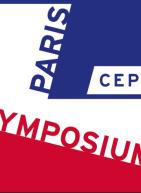DP19051 Shaping Inequality and Intergenerational Persistence of Poverty: Free College or Better Schools
We evaluate the aggregate, distributional and welfare consequences of alternative government education policies to encourage college completion, such as making college free and improving funding for public schooling. To do so, we construct a general equilibrium overlapping generations model with intergenerational linkages, a higher education choice as well as a multi-stage human capital production process during childhood and adolescence with
parental and government schooling investments. The model features rich cross-sectional heterogeneity, distinguishes between single and married parents, and is disciplined by US household survey data on income, wealth, education and time use. Studying the transitions induced by unexpected policy reforms we show that the “free college” and the “better schools” reform generate significant welfare gains, which take time to materialize and are
lower in general than in partial equilibrium. It is optimal to combine both reforms: tuition subsidies make college affordable even for children from poorer parental backgrounds and better schools increase human capital thereby reducing dropout risk.

